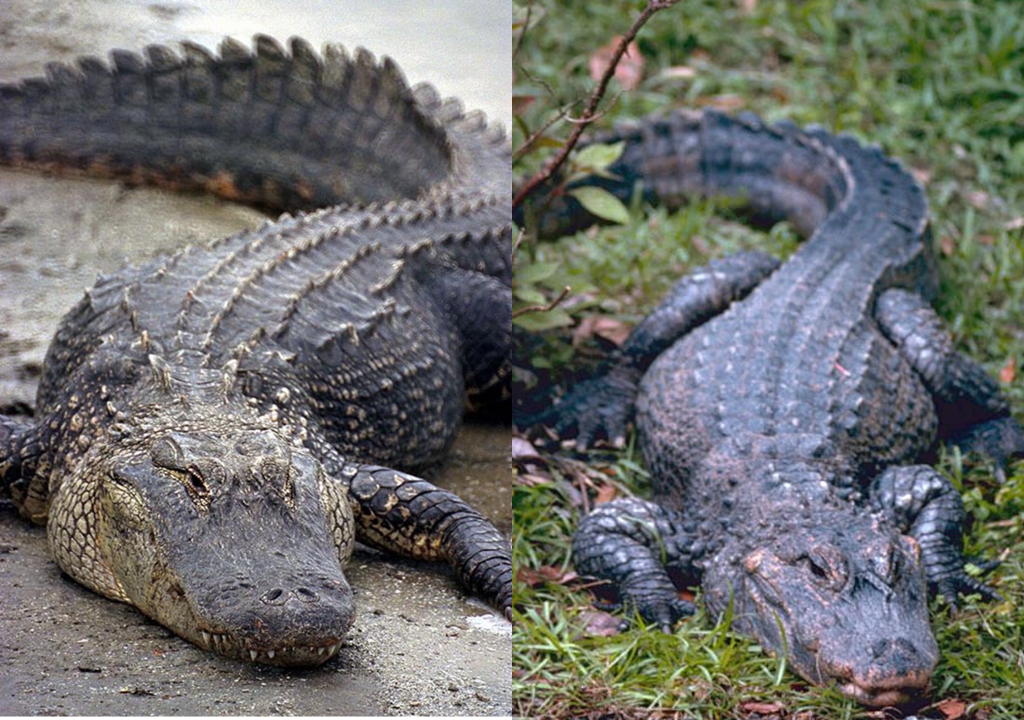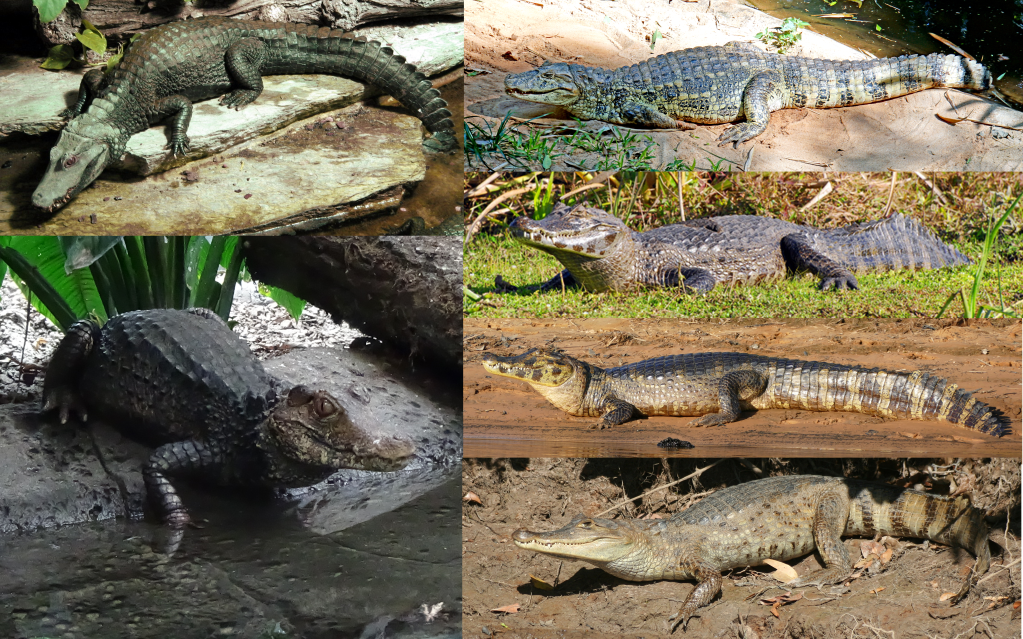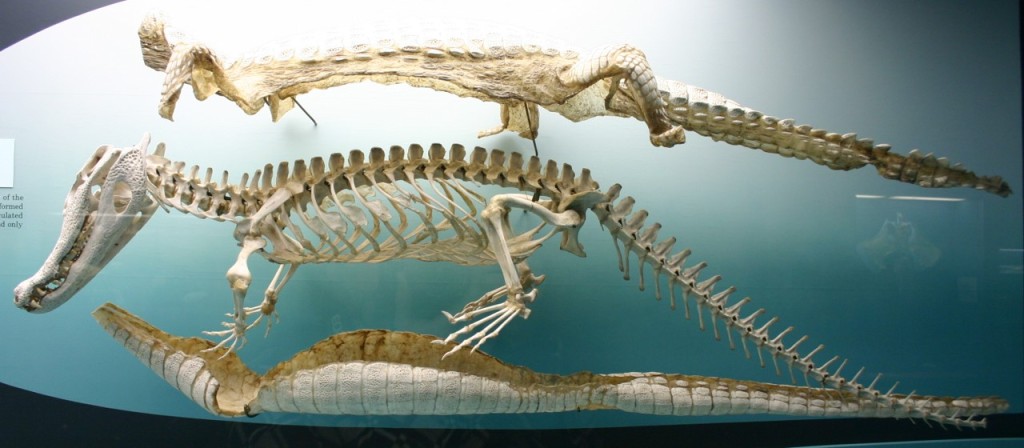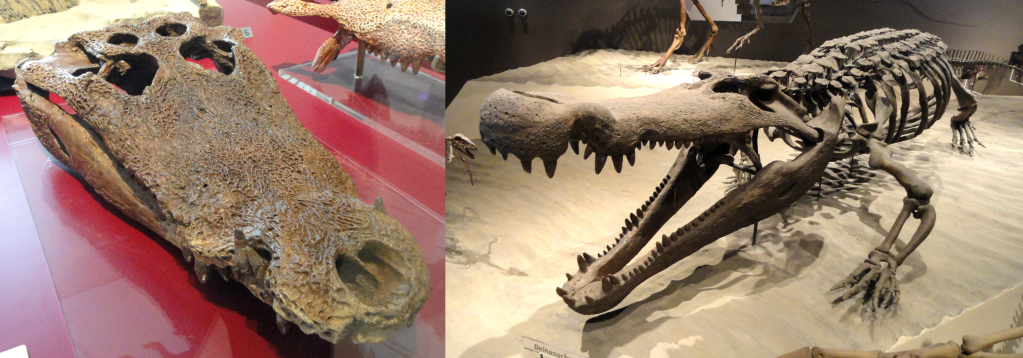Listen to Episode 194 on PodBean, YouTube, Spotify, or wherever you listen to your favorite podcasts!
They’re one half of the modern crocodilian family tree, and they’ve got an extensive and diverse fossil record going back to the Cretaceous. This episode, we explore Alligators and Caimans.
In the news
New pterosaur is the most complete in Australia, and it had a weird tongue
Giant extinct birds in Australia were surprisingly goose-like
Carvings in a bear bone might be among the earliest Neanderthal art
Ancient antennae hint at early social behavior in Cretaceous ants
The Alligatoroids
Among modern crocodilians, there are two main groups within the alligatoroid lineage: alligators and caimans.
Compared with their crocodile cousins, alligators and caimans tend to have more of an overbite and more U-shaped snouts, and they also lack the salt glands found in crocodiles and gharials.

Both images in the Public Domain [1, 2]

Top left: Smooth-fronted caiman (Paleosuchus trigonatus). Image by Factumquintus, CC BY-SA 3.0
Bottom left: Dwarf caiman (Paleosuchus palpebrosus). Image by Loury Cédric, CC BY-SA 4.0
Top right: Broad-snouted caiman (Caiman latirostris). Image by Dennis Jarvis, CC BY-SA 2.0
Second down on the right: Black caiman (Melanosuchus niger). Image by Jan Willem Kaptein, CC BY 2.0
Third down on the right: Yacare caiman (Caiman yacare). Image by Bernard DUPONT, CC BY-SA 2.0
Bottom right: Spectacled Caiman (Caiman crocodilus). Image by Berrucomons, CC BY-SA 3.0

The earliest members of the alligatoroid lineage are known from the Cretaceous Period over 80 million years ago. These earliest species are quite similar to modern crocs, and they came in a variety of sizes and habits. True alligators and caimans arose by around 60 million years ago. Fossil alligators are known from North America and Eurasia, while fossil caimans are known from North and South America.

Left: Skull of Leidyosuchus from Alberta. Image by Daderot, CC0 1.0
Right: Skeleton of the enormous Deinosuchus, known around the Western Interior Seaway. Image by Daderot, CC0 1.0

Top: Skeleton of Diplocynodon, an alligatoroid known mainly from the Paleogene of Europe. Image by Ghedoghedo, CC BY-SA 3.0
Bottom: Skeleton of Allognathosuchus, an alligatorine from Eocene North America. Image by Ghedoghedo, CC BY-SA 3.0


Gigantic body sizes have evolved multiple times along the alligatoroid lineage, in genera such as Deinosuchus, Purussaurus, and Mourasuchus. The largest of these grew to over 30 feet (10 meters) long. Exactly how these giants’ lifestyles different from their modern cousins isn’t totally clear.
Learn More
Alligators and Caimans on the IUCN Red List
Crocodilian Species List, Crocodile Specialist Group
Crocodile Habitat Map
The feeding habits of the strange crocodylian Mourasuchus (technical, open access)
A systematic review of the giant alligatoroid Deinosuchus (technical, open access)
Anatomy, ontogeny, and evolution of the archosaurian respiratory system: A case study on Alligator mississippiensis and Struthio camelus (technical, open access)
__
If you enjoyed this topic and want more like it, check out these related episodes:
We also invite you to follow us on Facebook or Instagram, buy merch at our Zazzle store, join our Discord server, or consider supporting us with a one-time PayPal donation or on Patreon to get bonus recordings and other goodies!
Please feel free to contact us with comments, questions, or topic suggestions, and to rate and review us on Spotify or Apple Podcasts!